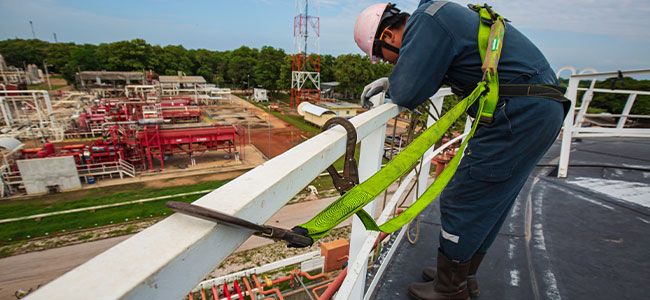
Helping Lone Workers Shed the Invisibility Cloak
Satellite messaging and GPS technologies help lone workers overcome challenges of invisibility, providing transformative benefits for safety and coordination across industries.
In the Harry Potter books and movies, the young wizard is gifted with a remarkable cloak. The user who wears it becomes invisible, able to slip out of sticky situations and eavesdrop on evildoers, which of course Harry does.
Many people might wish they had their own invisibility cloaks from time to time. But there is one group of people who would like to get rid of theirs. They are lone workers, whose jobs take them out of usable cellular coverage. According to the FCC, 16 percent of America’s land area has no LTE service. These are the wide open spaces far from cities and major highways, but where people live and businesses operate that are in need of service.
The Downside of Invisibility
From health care to deliveries, law enforcement to energy, long-haul trucking to repair services, lone workers become invisible as soon as they leave the cellular network. They can’t check in or make support requests. If they are in danger or come to harm, they have no way to signal for help. This is why lone worker regulations exist, but translating rules into action is hard without connectivity.
Invisibility is equally a burden for their employers, who are challenged to efficiently coordinate their people when they repeatedly vanish from sight.
There are solutions to invisibility. Cellular text messages can sometimes get through a weak signal even when calls can’t. Satellite phones can provide calling and text service wherever there is a view of the sky. But most satellite services are too expensive to supply to every lone worker.
The Right Device
That’s not always the case, however. There is a range of small, handheld messaging devices that transmit over satellite. In addition to text, they send GPS coordinates with every message. They also come with an SOS button. In an emergency, it signals for help and uses the GPS coordinates to connect with the nearest first responders, who receive the GPS coordinates of the person in need of help.
The right device is rugged, has a long battery life and is simple to use. Its coverage extends everywhere workers may go. Most importantly, the device and airtime are inexpensive enough to become part of the standard kit for lone workers on the job. That is the combination to look for if satellite messaging might be a good solution.
The Power of Location
Everyone is used to having GPS on phones; so it is easy to miss its amazing value. Global Positioning by Satellite (GPS) is a gift to the planet from the U.S. Air Force. It was developed early in the Cold War when military leaders realized they had nuclear missiles aboard planes, submarines and ships but no way to know precisely where those assets were at any given moment. It was opened for commercial use in 1983 and has grown enormously in its applications since then.
Today, the power of location data extends far beyond navigating the way home. Some GPS messaging systems provide a secure digital mapping application over the web, which displays the location of every device on the account. Digital maps can include geofencing software that lets the user define an area in which the device is approved to travel at any given time and then receive an alert if it moves beyond those limits. That’s useful when workers are in high-risk locations or need to protect their vehicles from theft or misuse.
Use Cases
General Electric uses GPS messengers to provide essential connectivity to wind energy workers as they visit installations around the world, frequently in areas with no cellular coverage. The combination of simple texting and GPS coordinates makes a big contribution to health, safety and efficiency.
The U.S. Department of Agriculture (USDA) uses GPS messengers to support animal and plant health inspections, food safety inspections, farm service agents and forest service workers in the field. They allow remote workers to check in, exchange messages and automatically report their location. Asset trackers attached to vehicles and heavy equipment send GPS location data on a user-determined schedule and can trigger alerts if the equipment is not where it should be.
Lumber companies send GPS messengers with their crews deep into trackless forests. In one example, the company was dispatching crews by helicopter and leaving the chopper on site all day in case of injury requiring medical evacuation. By equipping the crews with GPS messengers, the company freed up the helicopter fleet for transport duty but ensured they could still respond promptly to emergencies.
Young Mr. Potter found it very useful to be invisible when he wanted. But lone workers and their employers find that visibility does a better job of protecting their health and safety as well as the productivity of their organizations.
This article originally appeared in the July/August 2024 issue of Occupational Health & Safety.